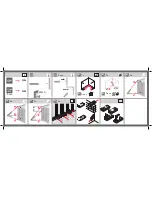
CET Electric Technology
68
Each TOU schedule has the following setup parameters and can only be programmed via communications:
Parameters
Definition
Options
Daily Profile #
Specify a daily rate schedule which can be divided into a
maximum of 12 periods in 15-min intervals. Up to 20 Daily
Profiles can be programmed for each TOU schedule.
1 to 20, the first period
starts at 00:00 and the
last period ends at 24:00.
Season #
A year can be divided into a maximum of 12 seasons. Each
season is specified with a Start Date and ends with the next
season’s Start Date.
1 to 12, starts from
January 1
st
Alternate Days #
A day can be defined as an Alternate Day, such as May 1
st
. Each
Alternate Day is assigned a Daily Profile.
1 to 90.
Day Types
Specify the day type of the week. Each day of a week can be
assigned a day type such as Weekday1, Weekday2, Weekday3
and Alternate Days. The Alternate Day has the highest priority.
Weekday1, Weekday2,
Weekday3 and Alternate
Days
Switching Time
Specify when to switch from one TOU schedule to another.
Writing 0xFFFFFFFF
to this parameter disables switching
between TOU schedules.
Format: YYYYMMDDHH
Default=0xFFFFFFFF
Table 4-22 TOU Setup Parameters
For each of the 8 Tariff Rates, the iMeter 6 provides the following Energy measurements: kWh Import/Export,
kvarh Import/Export, kVAh. T1-T8’s kWh Import/Export, kvarh Import/Export and kVAh are available via the Front
Panel, Web Interface and communications.
4.7
Time Synchronization
The iMeter 6 comes with a 6ppm, battery-backed real-time clock that has a maximum error of 0.5s per day. If
the supply power is lost or removed, the internal battery keeps the real-time clock running until power is restored.
Since the iMeter 6 provides timestamps for all recorded data, particularly the Power Quality events, it’s very
important to keep the clock well synchronized for the data and events recording.
There are several methods to synchronize the iMeter 6’s clock:
1)
The Web Interface can be used to set the clock of an individual iMeter 6 manually or through the
Sync.
with PC
function using the computer’s clock as the time source
Figure 4-5 Time Synchronization via Web Interface
















































